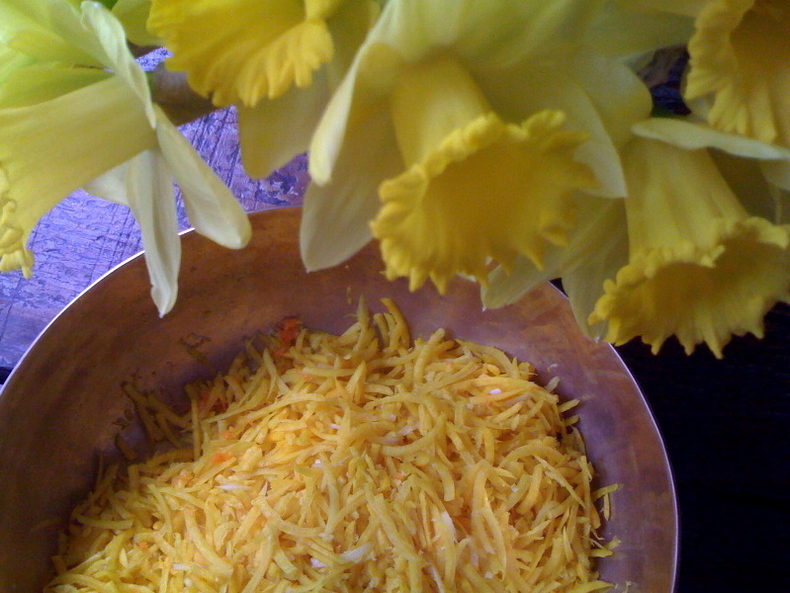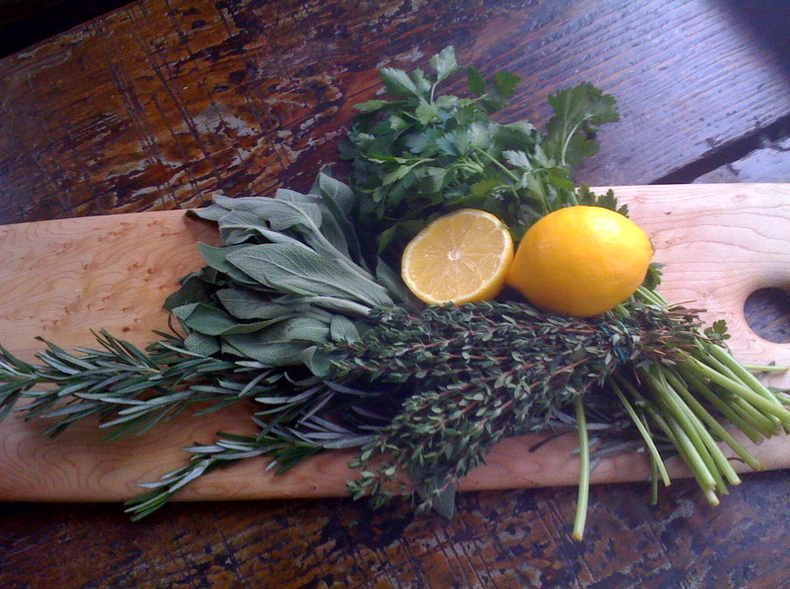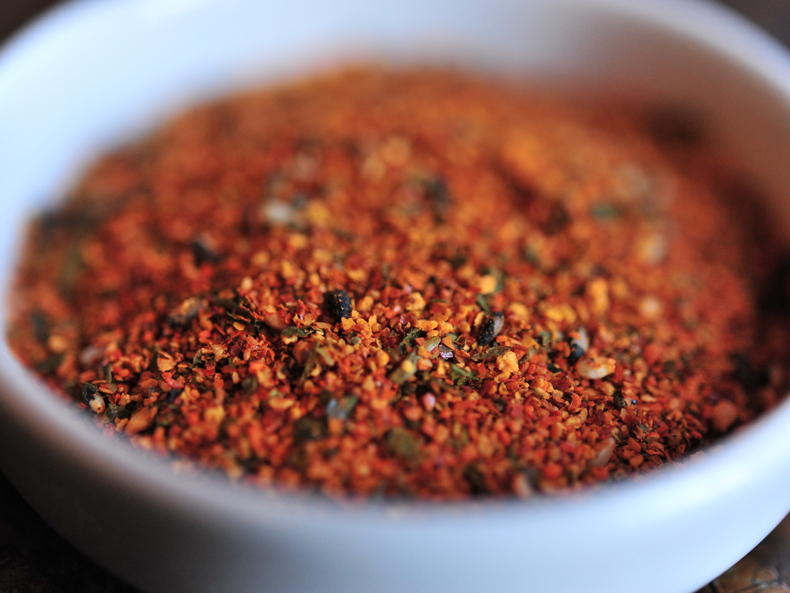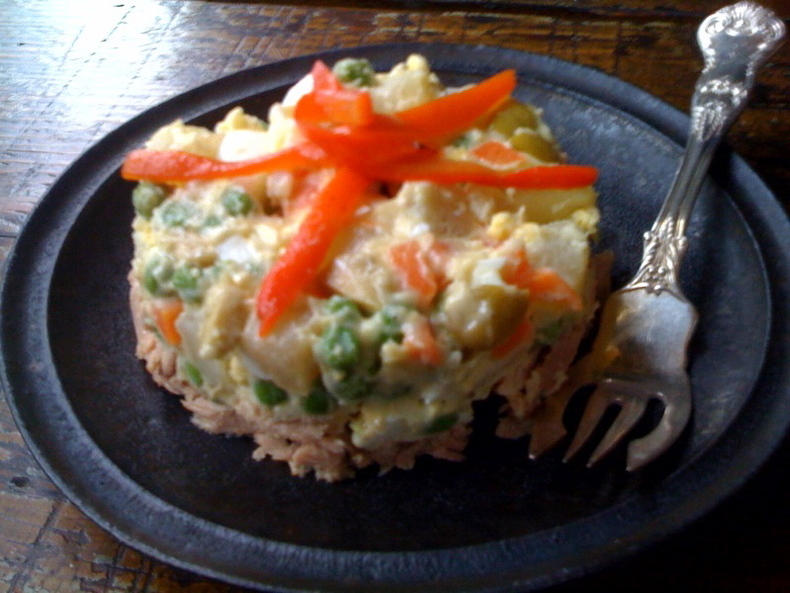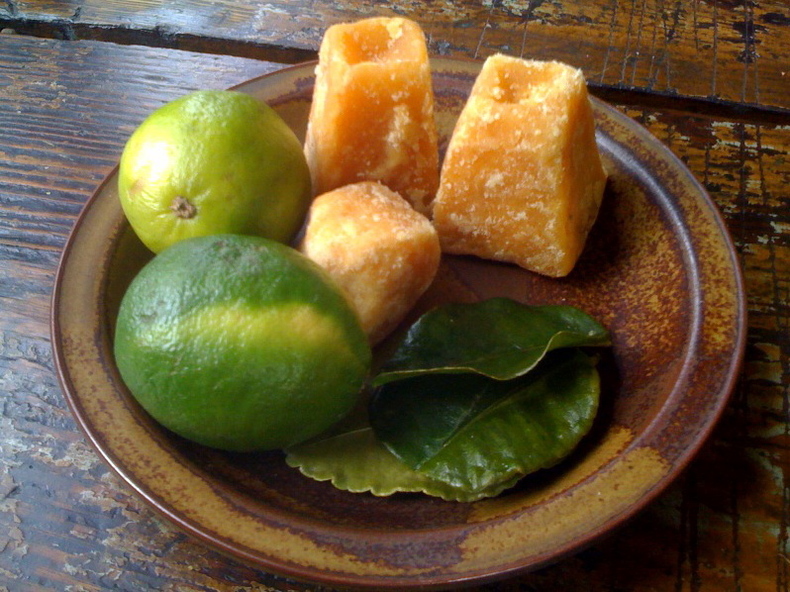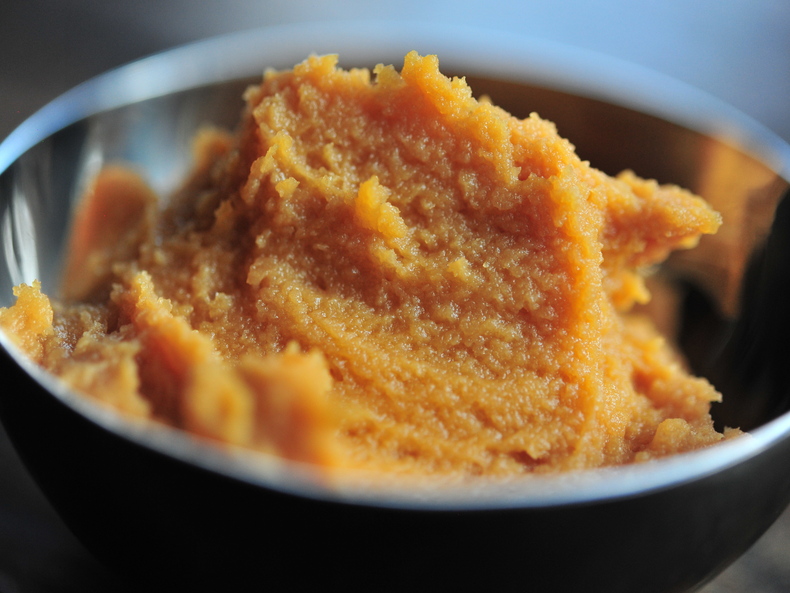Anecdotal evidence would seem to indicate that they are scarce. Beets are one of the few foods that G will not eat. Perhaps the only food. And during a recent beet-themed recipe competition on Food52, it came out that many other women's husband are also beet-shunners. Most of them, in fact. You may have heard that even the President is in this camp. There are no beets in the White House garden. Sadly, there are rarely beets in my own kitchen—despite the fact that I LOVE THEM. As a child, I was known to eat beets until I peed pink. I can't resist their intensely earthy sweetness. G thinks they taste like dirt. This got me to thinking that maybe there was some sort of Y chromosome thing involved. (Although there are undoubtedly loads of Russian men slurping down their borscht.) Anyway, it's a mystery.Beets are rich in the highly desirable B vitamin folate, plus potassium, manganese and fiber. Purple, golden or candy-striped chioggia, their antioxidant properties are numerous. For a much more thorough nutritional analysis, see here. Beets pair wonderfully with sprightly greens, with goat cheese, walnuts and citrus zest. They are often eaten with horseradish, which cuts through their thick sweetness. I love eating beets just simply roasted and dressed with sherry vinegar and walnut oil. But this recipe for a beet rösti (an Editor's Pick on Food52) is a fun way to try to fool the man in your life into eating them. I used golden beets because they more closely resemble the potatoes used in the classic Swiss rosti, a pancake that's like a crusty slab of hash browns with a slightly creamier center.
Read More...
Twitter @glutton4life
3.7.10 Ready for Your Close-Up?
Thought you might be looking for a snack worthy of the Oscars. Might I suggest my recipe for the super-addictive Jimmy "Crack" Corn? It's quick and easy to make and really quite delicious. Hopefully you'll have lots of friends to share it with; if not, you're in danger of eating the whole batch. I don't dare make it at home. G and I have a history of addiction to kettle corn. It got pretty ugly. In case you're up for something a bit more ambitious and on the savory side, here's a recipe for stuffed and fried olives that recently took home the prize for "Your Best Movie Snack" on Food52. And last but not least, how about a delicious frozen treat from one of the many I've posted? Choose from cardamom ice cream; citrus sorbet; burnt-orange ice cream; grapefruit-ginger sorbet; or coconut-lime sorbet. You'll need something to keep you going—can you believe they've increased the number of nominations for Best Picture? Sacrilege! (Or pathetic desperation?) We'll be up all night. And god knows we need our energy for the intensive critiquing of the gowns, the hairdos, the facelifts, and the artificially plumped-up boobs, lip and cheeks. I'm raring to go!! Let's pray that Tilda Swinton makes her annual appearance as The Only Actress With Real Personal Style and a Sense of Fashion. If Meryl wins for her portrayal of Julia I'll have to fight back the gag reflex (just like I did while watching that parodic performance in that overrated film). Anyway, as I keep saying on Food52, it's an honor just to be nominated.
Read More...
Read More...
3.6.10 Playing Chicken
Another week gone by and, I'm pleased to say, another two of my recipes singled out by the editors of Food52. I still haven't actually won any of their contests, but lots of honorable mentions do add up. This time it was my Scarborough Fair Chicken and my Golden Rösti (made from yellow beets). I'll share the former with you first. My dear friend Marilee was recently asking me for a good roast chicken recipe, and I think this one is deliciously reliable. The name, of course, refers to the old English ditty and the herbs mentioned therein: parsley, sage, rosemary and thyme. Add some butter, lemons and shallots, and you're in serious business. The chicken you use really matters—and here I'm going to flog the organic argument once again. Despite the American propensity for enormous breasts, they're just not worth keeping our chickens in captivity in order to force-feed them the required diet of (subsidized) corn. Go for a nice free-range roaster and you'll enjoy better flavor and a freer conscience.
Read More...
Read More...
3.5.10 Jewel of India
After spending the first part of our honeymoon traveling in southern India with our dear friends Scott and Lisa, G and I made our way to Rajasthan for what would be three of the best weeks of my life. Among the many spectacular hotels we were privileged to visit was this incredible 18th-century palace in the araval hills outside Udaipur. It is not the immediate go-to hotel in Udaipur; most people head for the Oberoi Lake Palace. But G somehow managed to snuffle this one out (like the truffle hound he is) and it was absolutely stunning. Devi Garh has only 39 suites, and they all feature local marbles and semi-precious stones. Our room was appointed with lapis lazuli—enormous sleek, azure slabs of it. There was a gorgeous pool and a wonderful spa where we were oiled up and rubbed down. Other features included little outdoor sitting rooms; a bar with chaises longues piled with brilliant silk pillows where you could have drinks at night by the light of these amazing wire baskets that held small, glowing fires; and secret courtyards, including one with a swing hanging from a jacaranda-like tree. And at the end of each of the two magical days we spent at Devi Garh, there was dinner.
Read More...
Read More...
3.4.10 The Gray Lady, R.I.P.
I never met her, nor dined at her restaurant, but I could tell from her food, and the joie de vivre that radiated from her face, that Rose Gray was a glutton for life. We lost another great one to cancer today. She was only 71. Co-owner and co-chef of London’s River Café, opened in 1987 in a converted warehouse on the Thames, she was a self-taught cook who fell in love with the cucina rustica of Northern Italy while living in Lucca. After her friend Nell Campbell invited her to run the kitchen at Nell’s, a New York hot spot in the 80s, Ms. Gray caught the bug and decided to open her own place, along with her friend Ruth Rogers (seen above), another self-taught chef.In honor of this great lady, I include here one of her pristine recipes, a classic Sicilian pasta dish comprised of just a few ingredients. It was in simplicity that she found much of the pleasure and excitement in cooking. I hope you will, too. Eat well and raise a glass to Rose.
Read More...
Read More...
3.2.10 Bat Sh*t
Have you heard about the plight of the bats here in the northeast? They’re suffering from something called white-nose fungus, a scourge that has killed more than a million bats since it was first noticed in upstate New York in 2006. The sugary looking smudges of fungus that accumulate on bats' noses and wings seems to thrive in cold, damp hibernation caves. It disturbs the bats’ hibernation sleep, waking them up and sending them out, confused and disoriented, into frigid temperatures. This dangerously depletes their stores of fat and they frequently die of starvation. The fast-spreading disease has already been detected in nine states, and biologists fear it could wipe out certain bat species entirely. Because bats can consume their own weight in insects in a single day, their decimation could have serious consequences. A rise in the number of agricultural pests could mean that farmers will react with more pesticides, which would find their way into the water table.
Read More...
Read More...
3.1.10 Condimental: Spice Girl
If you've ever been out for Japanese food (not just sushi, but maybe soba or yakitori or hot pots), you may have noticed a little red shaker on the condiment tray. That's shichimi togarashi, a Japanese spice blend traditionally eaten on noodles, soups and stews. It's made from a combination of seven spices (shichi means seven in Japanese), most commonly ground red chili pepper, dried orange peel, black sesame, white sesame, ginger, ground sansho, and nori flakes or powder. You'll often also see a little green shaker alongside, and that's just plain sansho, a berry from the prickly ash tree that is a relative of the Sichuan peppercorn. It has that same peppery-piney flavor that leaves a slight tingle on the tongue. You can find both these condiments at any Japanese market, or online at Japanese food specialty sites.
Read More...
Read More...
2.28.10 Spanish Steps
Have you been to Txikito yet? As its name indicates (a Basque version of the Spanish "chiquito," which means tiny), this Chelsea restaurant has only a few tables, and you'd be lucky to grab one on any night (or at lunch). Chefs and owners Eder Montero and Alexandra Raij turn out some wonderful regional Spanish food that takes me back to the years I spent in that beautiful country. My father was a professor of Spanish literature and, every seven years, would take his sabbatical there. I attended the 4th and 10th grades in Madrid, and went back for two semesters off when I was in college. I fell in love with the place, the people, the food, the language. Some of the dishes at Txikito work upon my memory in the way that Proust's madeleine did his: the fat, silky white asparagus of Navarra; the crisp croquetas with their centers oozing creamed cod or chicken; the boquerones, subtly saline white anchovies; but, most of all, the ensaladilla rusa. (Little Russian salad, supposedly invented by a Russian in the late 19th century.)
I used to eat this delightful version of potato salad, a classic Spanish tapa, almost every Sunday morning when I lived in Madrid in my twenties. They served it at a little café right on the edge of el rastro, the big flea market. The most outrageous punks would go there, flaunting their sky-high mohawks, tight leathers and scary piercings. I remember feeling super cool, kicking the sawdust on the floor, smoking my Marlboro reds and taking leisurely bites of this rich, creamy salad. Txiquito's version—potatoes, peas, carrots and bits of green olive bound together with homemade mayonnaise and mounded atop a salty layer of oil-cured tuna—takes me right back there.
Read More...
I used to eat this delightful version of potato salad, a classic Spanish tapa, almost every Sunday morning when I lived in Madrid in my twenties. They served it at a little café right on the edge of el rastro, the big flea market. The most outrageous punks would go there, flaunting their sky-high mohawks, tight leathers and scary piercings. I remember feeling super cool, kicking the sawdust on the floor, smoking my Marlboro reds and taking leisurely bites of this rich, creamy salad. Txiquito's version—potatoes, peas, carrots and bits of green olive bound together with homemade mayonnaise and mounded atop a salty layer of oil-cured tuna—takes me right back there.
Read More...
2.27.10 Lime in the Coconut
Ever since that dinner at Il Buco a couple of weeks ago, I've been thinking about the wonderful coconut-lime sorbet I tasted there. So creamy and rich, yet so tart and refreshing. Once I started experimenting in the kitchen, I went off on my own tangent. What I came up with is different, a bit more exotic, but I think just as delicious. It's SO easy—did you get your ice cream maker yet? This recipe does call for a couple of unusual ingredients: deeply flavorful jaggery, which I showcased here, and those beautifully perfumed wild (kaffir) lime leaves, which I also recommended for this curry. If you have trouble finding the lime leaves, you can substitute some lime zest, though the flavor will be quite different. I have seen them on occasion at Whole Foods, definitely at Kalustyan's, and at any Thai market. I've also come across them dried, but have never tried those. (Someone once asked me to do a post about how to stock your pantry, and I will attempt that soon, but what I consider to be basic essentials may seem rather arcane.) Just because this is called sorbet, by the way, doesn't mean it's especially low in fat. Coconut milk is actually rather high in fat—how else could it be so unctuous? But supposedly this vegetable fat is more easily metabolized by the body. It contains lauric acid, which is also found in mother's milk and has been shown to promote brain development and bone health. Coconut milk is considered very healthy in Ayurvedic medicine, where it is used to heal ulcers.
Read More...
Read More...
2.26.10 Miso Hungry
Not sure how many of you read New York magazine, but I wanted to point out that we scooped them this week! (Did I say "we"? I guess I mean me, and of course, you, gentle reader.) They featured a round-up of salts that followed on the heels of mine, and I was pleased to note that food critic Adam Platt's favorite is the same: Maldon sea salt. This whole round-up idea seems to be a hit around here, so I will plan to offer more. Next up, sometime in the near future: vinegars.Of late I have been obsessed with the notion of creating a miso-butterscotch pudding. You can imagine just by looking at that photo of miso, above, how these two luscious flavors might go well together, right? I need an afternoon to putter around in the kitchen and develop this recipe; hopefully some time will free up soon. I'm betting most of you don't eat much miso, but I think you'd really like it. It's produced by fermenting soy beans (or rice, barley, buckwheat and even hemp) with salt and a fungus (koji), and the resulting flavor is variously described as salty, sweet, earthy, fruity and savory. (Hello, umami?) There are different types of miso—red, white, yellow, mixed—and they are all subtly different. Generally, yellow miso is slightly sweete; red miso is stronger and saltier; and white, commonly used for miso soup, is the most delicate. Apparently some of the nutrition in miso—including zinc, phosphorus, manganese, protein and copper—is destroyed through cooking, so it's often stirred into dishes late in the game. I'm sure you've had miso soup, right? A dashi broth with the paste stirred in at the end. Recently on Food52, someone submitted a recipe for oatmeal with miso stirred in after cooking. There are quite a few ways to incorporate this versatile seasoning—spread it on a sandwich, mix it into salad dressing, into rice, even into mashed potatoes. I recently posted a recipe for short ribs with miso. It's actually quite versatile, and can lend its earthy, salty goodness to many foods beyond Asian cuisine. Stay tuned for the miso-butterscotch pudding, but meanwhile here are a couple of easy ways for you to try it.






